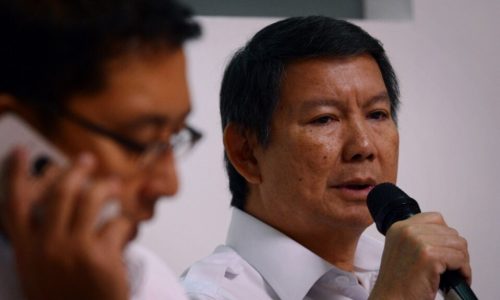President-elect Prabowo Subianto is reportedly planning to increase Indonesia’s debt ratio to nearly 50 percent of its Gross Domestic Product (GDP) over the next five years, a significant rise from the projected 37.98-38.71 percent for 2025, though it remains within the 60 percent maximum limit set by Law No. 17/2023.
According to a Bloomberg source, this debt increase is intended to finance various programs promised during Prabowo’s campaign. Gradually raising the debt ratio will provide Prabowo’s economic team with the flexibility to navigate potential challenges. This strategy could elevate Indonesia’s debt ratio from the current 39 percent to its highest level since 2004 by the end of Prabowo’s term.
“While Prabowo has discussed the potential for increased debt during his campaign, the specifics of these commitments remain unclear,” Bloomberg reported on Friday, June 14, 2024.
This move marks a significant shift for Indonesia, which has traditionally relied on conservative fiscal policies to maintain investor confidence.
The government has strictly adhered to a budget deficit cap of 3 percent of GDP and a maximum debt-to-GDP ratio of 60 percent, established following the 1997 Asian financial crisis, except during the pandemic.
These measures have helped Indonesia secure an investment-grade credit rating despite its relatively weak state revenues.
The source added that a 50 percent debt ratio is seen as optimal to assure investors of the government’s commitment to prudent fiscal management. Exceeding a 60 percent ratio, however, could raise market concerns.
“This plan is still under consideration, and discussions are ongoing, so the proposal may change,” the source noted.
Thomas Djiwandono, a member of Prabowo-Gibran’s Transition Team, emphasized that Prabowo’s focus is on adjusting priority programs, particularly in food and nutrition, within the 2025 state budget.
“The program aims to align with government targets while ensuring careful fiscal management. Any other discussions are merely opinions and do not reflect our official stance,” Thomas said.
Prabowo requires substantial funds to fulfill his campaign promises, such as providing free school lunches, which are estimated to cost Rp460 trillion annually.
Even with the increased debt ratio, Indonesia’s debt would still be lower than neighboring countries like Malaysia, Thailand, and Singapore, where debt ratios exceed 60 percent.
However, raising the debt ratio comes at a cost. Josua Pardede, Chief Economist at Bank Permata, warned that government debt servicing could become more expensive due to high interest rates in both domestic and global markets.
“Currency volatility can also make pricing unreliable, as the rupiah recently hit its lowest point in four years,” Joshua said.
President Joko “Jokowi” Widodo has already left a significant debt legacy. During his tenure, the debt-to-GDP ratio increased by 5 percentage points in his first term to fund infrastructure projects and another 5 points in his second term to address the pandemic crisis.
This increase has long-term implications, with the government expected to spend Rp500 trillion (Rp30.5 billion) on interest payments this year, consuming 15 percent of the entire budget.
Bloomberg Economics’ Tamara Henderson emphasized that the goals and quality of government spending are crucial for maintaining market confidence. The government can justify a reasonable increase in the debt ratio if the funds are spent wisely.
Henderson suggested that government spending should address key infrastructure gaps and improve human resources equitably.
“A gradual increase in the debt ratio is preferable to a sharp spike, as you don’t want to scare off investors or rating agencies,” Henderson said.
“Additionally, ensuring the money is used effectively is vital. For instance, awarding contracts to the best providers rather than allowing funds to end up in private accounts,” she concluded.









